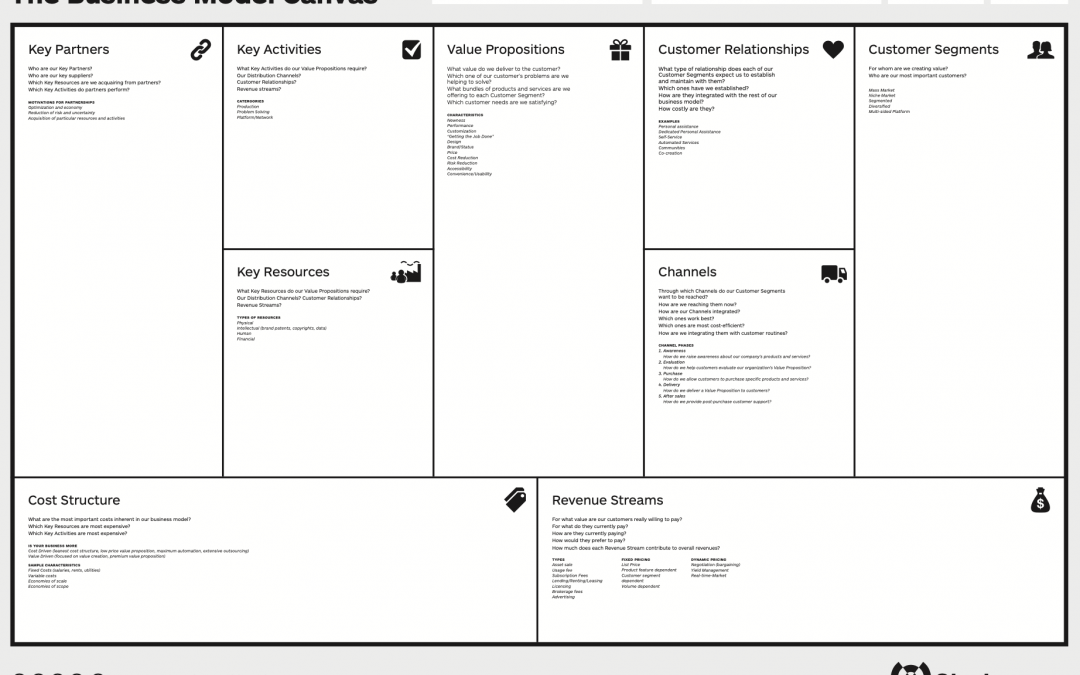The Business Model Canvas was developed as a strategic management and entrepreneurial tool for the development and improvement of business models. It allows to describe, design, challenge, invent, and pivot business models. The BMC is often also used to understand, document, and improve business models. The outcome is usually a complete business model hypothesis.

Time
Creating a solid first business model sketch requires at least 90 minutes. You will need to iterate several times.

People
As with any other canvas, bring together a diverse team no larger than 8 people to allow for meaningful discussion.

Tools
Beyond printouts of the canvas you will need a selection of sticky notes and markers. Alternatively you can work online using the Mural or Miro templates.
The Business Model Canvas was originally created as an outcome of Alexander Osterwalder‘s thesis on business ontology. It has become a tool widely applied by both startups as well as corporates worldwide.
How to use the Business Model Canvas
Typically the BMC is being filled (using sticky notes on an A0 printout to be able to improve the inputs while the model is being completed (see „working with canvases and tools“) as follows:
1. Identify and describe the target customer persona – use one canvas per target group!
2. Outline the value proposition catering to the customer‘s identified needs or pains
3. Specify channels to deliver the value proposition to the customer
4. Detail the customer relationship
5. Sketch the expected revenue streams
6. Describe the key resources, activities, and partnerships required to deliver the value proposition
7. Delineate the resulting cost structure
Does the result make sense overall? If not, iterate until the model seems consistent. In further steps, the implied business model hypotheses need to be tested with customers, … and iteratively improved.
Dos & Dont’s
• Do clarify target user Persona(s) and Value Proposition beforehand using a suitable persona tool and the Value Proposition Canvas
• Test and improve assumptions iteratively using prototypes and MVPs
• Don‘t mix multiple target groups on one BMC
• Don‘t mistake the BMC for a business plan
• Don‘t try and implement the first iteration of a business model without testing and iterating the implied hypotheses
Further Reading
The original books by A. Osterwalder/Y. Pigneur et. al.: „Business Model Generation“ and „Value Proposition Design“; An excellent introductory blog post by Steve Blank.
The Business Model Canvas is a copyright of Strategyzer AG and can be downloaded from their site.

